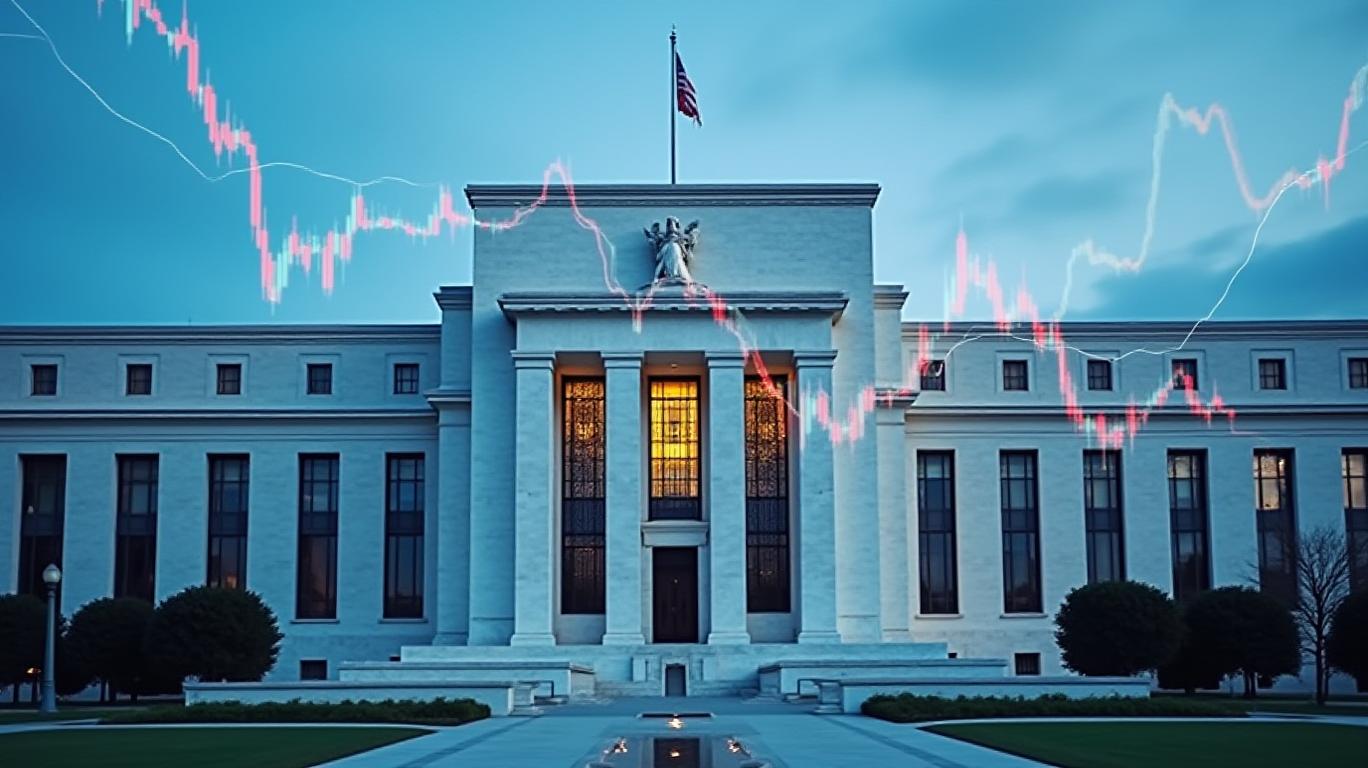Navigating Fed Gridlock: Strategic Allocations for Inflation-Hedged Assets in a Volatile Rate Environment
The Federal Reserve’s May 2025 meeting underscored a critical truth: policy uncertainty is the new normal. With rates held steady at 4.25%–4.5% amid tariff-driven inflation risks and labor market resilience, investors face a precarious balancing act. The path forward demands a sharp focus on inflation-hedged assets to shield portfolios from Fed-induced volatility.

The Fed’s Dilemma: Gridlock in a High-Inflation World
The Fed’s May minutes revealed a committee divided not by dissent, but by caution. While all members agreed to hold rates steady, internal debates simmered over inflation’s trajectory. Trade policy uncertainty—elevating tariffs to near 1930s levels—has created a “debt maturity wall” of $8.9 trillion in U.S. obligations due within a year. This fiscal tightrope means the Fed is unlikely to cut rates aggressively, even as core PCE inflation edges toward 3.4% by year-end.
Inflation-Hedged Assets: The New Ballast
In this environment, traditional safe havens like long-term Treasuries are failing investors. During April’s equity selloff, the 10-year Treasury underperformed historically, while gold surged to $3,124/oz—a record high. The message is clear: diversification must now prioritize assets inherently tied to inflation and geopolitical risks.
1. TIPS: Anchoring Real Returns
Treasury Inflation-Protected Securities (TIPS) remain foundational. Their principal adjusts with inflation, shielding investors from the Fed’s “wait-and-see” approach. However,
advises favoring short-term Treasuries over long-dated bonds due to term premium risks.
2. Commodities: A Hedge Against Policy Chaos
Gold isn’t the only inflation play. Commodities like copper and oil—critical to supply chains strained by trade wars—are poised to benefit from fiscal stimulus and energy transitions. State Street’s Q2 forecasts model commodities using inflation expectations and the U.S. Dollar Index, with roll yields adding further upside.
3. REITs: The Bond-Equity Hybrid
Real Estate Investment Trusts (REITs) offer a unique blend of income stability and inflation-linked growth. Modeled as a mix of bond-like dividends and equity appreciation, REITs have historically outperformed during periods of Fed uncertainty. Favor sectors tied to infrastructure and logistics, which benefit from AI-driven demand and geopolitical spending.
4. Equities: Target Sectors with Pricing Power
Not all equities are created equal. Defensive sectors like Consumer Staples and advanced military tech—both inflation-resistant—are outperforming cyclicals. Meanwhile, U.S. tech giants and Japanese reform-driven stocks offer growth resilience. Avoid small-caps and emerging markets exposed to China trade risks.
Risks to Monitor
- Trade Policy Volatility: The Fed’s “trade policy uncertainty index” is at record highs, risking permanent damage to investment.
- Debt Refinancing: With $8.9 trillion due in 12 months, any Fed misstep could trigger a liquidity crisis.
- Geopolitical Fragmentation: Supply chains remain fragile; China’s dominance in critical minerals amplifies commodity price risks.
The Call to Action: Position Now for the Fed’s Next Move
The Fed’s projected two rate cuts by year-end—potentially lowering rates to 3.75%–4.0%—create a window for strategic reallocation. Investors must act decisively:
- Overweight inflation hedges: Add gold, TIPS, and commodity ETFs like GLD or USO.
- Rotate into defensive equities: Focus on dividend-focused ETFs (e.g., VIG) and Japan’s corporate reform plays (EWJ).
- Avoid long-dated bonds: Stick to short-term Treasuries or European credit (HYG, LQD) for yield.
Conclusion: The Fed Can’t Act—You Must
The Fed’s gridlock isn’t a temporary glitch. It’s a structural reality shaped by inflation, debt, and trade wars. This is not the time for passive portfolios. The assets that thrive in this environment—TIPS, gold, REITs, and select equities—are no longer “alternatives.” They’re the pillars of prudent investing. The clock is ticking: act now to position for a Fed-less future.
This analysis incorporates data from BlackRock, State Street, and Fed meeting minutes as of May 2025. Past performance does not guarantee future results.

Comments
No comments yet